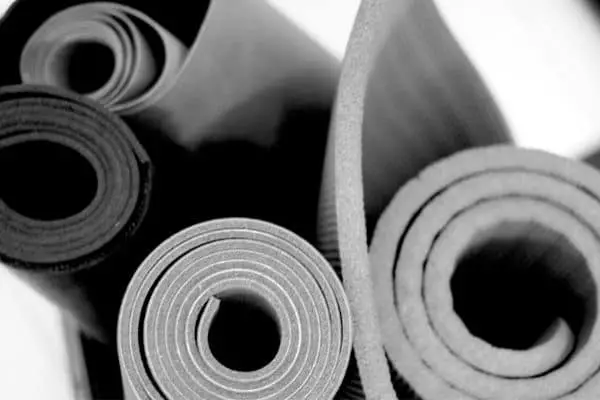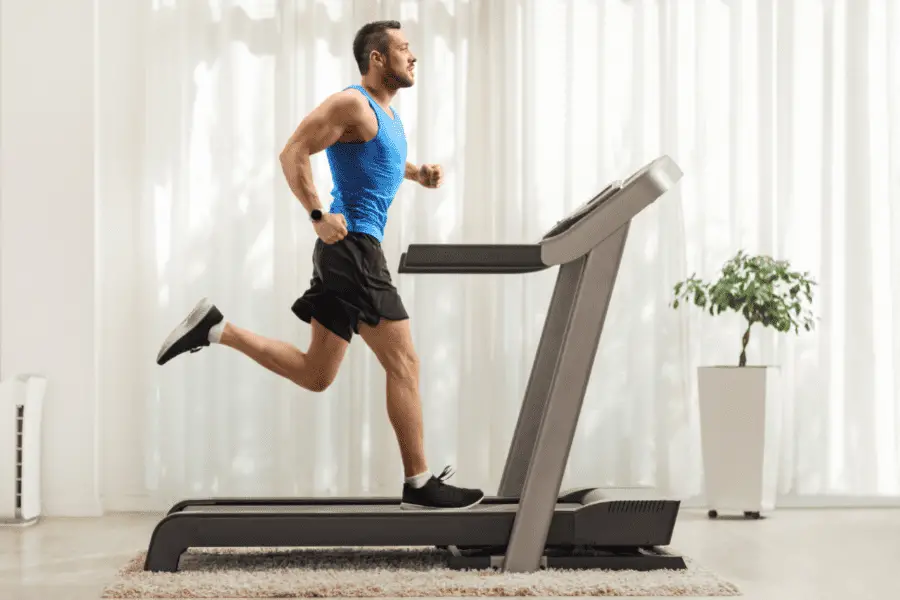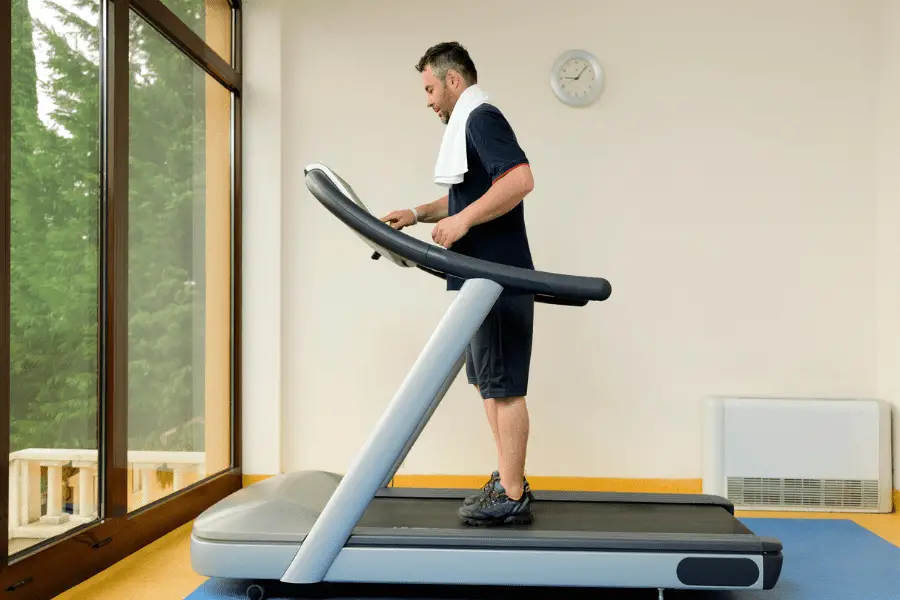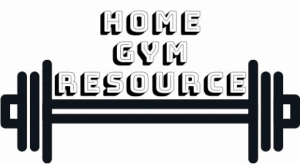Do you really need a treadmill mat under your treadmill or is it just a way to get some extra money out of you? Treadmill mats do more than take your money and lay on the floor, they actually have considerable benefits.
While not strictly necessary, a treadmill mat has some considerable benefits for your floor and treadmill. Treadmill mats reduce noise, protect your floor, prevent dust from getting into the moving parts and prevent the treadmill from sliding around. The are also easy to keep hygienic after sweating.
Why treadmill mats are so important and who needs them might not yet be completely clear to you. Keep reading to find out more.
Key Takeaways
- A treadmill mat serves multiple purposes, including protecting the flooring, dampening noise and vibrations, preventing dust and dirt buildup, providing stability, and facilitating easy maintenance and cleaning.
- The material of the mat, such as rubber or PVC, can affect its durability, aesthetics, and vibration dampening capabilities. Rubber mats tend to be more durable and effective in reducing vibrations.
- The thickness of the mat is crucial in absorbing noise and vibrations. Thicker mats offer enhanced noise reduction and vibration absorption.
- Choosing the right size of the mat ensures optimal coverage and effectiveness. Ideally, the mat should extend at least 3 inches beyond all sides of the treadmill.
- While a treadmill mat is generally recommended, it may not be necessary if you already have suitable gym flooring in place or if you don’t prioritize the benefits it provides.
- Rubber rolls marketed as gym flooring are also perfectly good treadmill mats, better in some cases.
Recommended Treadmill Mats
Or click the link to find more in-depth information on what the best treadmill mats are and why.
Contents
What Are Treadmill Mats Good For?
A treadmill mat is a specialized mat designed to be placed under a treadmill. It is typically made of rubber or PVC material and serves several purposes.
The mat acts as a protective barrier between the treadmill and the floor, dampens noise and vibrations generated by the treadmill, prevents dust and dirt from accumulating in the machine, provides stability to prevent sliding or movement during workouts, makes the cleaning process easier, and helps extend the lifespan of both the treadmill and the flooring.
If you own a treadmill, you might be wondering if you need a treadmill mat. Well, let’s delve into what a treadmill mat actually does and why it can be beneficial for your home gym setup.
| Benefits of a Treadmill Mat | Description |
|---|---|
| Protect Your Flooring | – Spreads out the weight of the treadmill, reducing stress on the floor – Absorbs impact and vibrations to prevent damage to the flooring |
| Dampen Noise and Vibrations | – Made of rubber or PVC to effectively absorb vibrations – Significantly reduces noise during workouts – Creates a quieter environment for you and minimizes disturbance to neighbors |
| Prevent Dust and Dirt Buildup | – Acts as a barrier to prevent dust and debris from infiltrating the treadmill – Keeps moving parts clean and prolongs their lifespan – Particularly useful in dusty environments or on carpeted floors |
| Provide Stability and Prevent Sliding | – Offers stability and grip to keep the treadmill securely in place – Prevents sliding or movement during intense workouts or high-speed intervals – Protects the floor from damage caused by treadmill motion |
| Easy Maintenance and Cleaning | – Provides a non-absorbent surface that is easy to clean – Wiping down the mat keeps the surrounding area free from sweat and liquids – Maintains a hygienic workout space |
1. Protect Your Flooring
Treadmills are heavy machines, and their continuous impacts can wear out and damage your flooring over time. A treadmill mat helps by spreading out the weight and reducing the stress on your floor. Additionally, the mat absorbs impact and vibrations, safeguarding your flooring from potential damage.
Suggested post: Will a treadmill damage my floor?
2. Dampen Noise and Vibrations
Treadmill mats, often made of rubber or PVC, are excellent at absorbing vibrations. By placing a mat under your treadmill, you can significantly reduce the noise and vibrations generated during your workouts. This not only creates a more peaceful environment for you but also prevents excessive noise from reaching your neighbors.
Suggested post: Do treadmill mats reduce noise?
3. Prevent Dust and Dirt Buildup
Treadmills have moving parts that can accumulate dust and dirt, which can negatively impact their performance and lifespan. A treadmill mat acts as a barrier, preventing dust and debris from infiltrating the machine. This is especially beneficial if your treadmill is located in a dusty environment or on carpeted floors that release fibers.
4. Provide Stability and Prevent Sliding
The impact of running on a treadmill can cause the machine to slide or move around, potentially damaging your floor. A treadmill mat offers stability and grip, preventing any unwanted movement. It ensures that your treadmill stays securely in place, even during intense workouts or high-speed intervals.

Haven’t bought a treadmill yet? Click here to find a complete guide on how to select the right treadmill for you.
5. Easy Maintenance and Cleaning
Sweating during your treadmill workouts is inevitable, and cleaning the surrounding area can become a hassle without proper protection. A treadmill mat simplifies the cleaning process by providing a non-absorbent surface that is easy to wipe down. It keeps your floor clean and free from sweat or any other liquids, maintaining a hygienic workout space.
Suggested post: Can I use a yoga mat instead of a treadmill mat?
Dirt, dust and moving parts are never a good combination. Treadmills do have quite a few moving parts where dust and dirt can get in.
Rollers, bearings, pivot parts for the incline and the motor are all moving parts that can be negatively impacted by too much dust. It will reduce the lifespan of the parts and make it less smooth to use. Also, dust buildup can cause the motor to overheat quicker.
This is especially a risk if your treadmill is on a surface that can release a lot of dust with vibration like carpet. Also, if your treadmill is in an environment with more dust and dirt than normal (like a garage or basement), a treadmill mat will help keeping particles out.
Treadmill mats are much easier to keep dust free than a concrete or carpet floor. Also, the mat provides a bit of a ledge that provides a bit of a dam for dust that blows around. Combine this with regular cleaning, maintenance and maybe even a cover over your treadmill will keep most of the dust out.
Of course over time you’ll still want to clean out the machine carefully to prevent too much buildup but a treadmill mat help extend the time the treadmill stays clean.
6. Make the area easy to clean
Running on a treadmill makes you sweat. Most of that sweat will end up on the treadmill but some might get on the area around the treadmill as well. Most types of flooring aren’t made to deal with sweat or any liquid for that matter. It can degrade the material quickly.
So to prevent sweat from getting into your flooring, a treadmill mat that’s a little larger than the outside dimensions of the treadmill, this will help a lot.
Treadmill mats are non-absorbent so it’s very easy to clean off any liquid. That makes treadmill mats easy to clean in general. Just a damp cloth with a mild detergent will take care of anything. And keeping it clean is a good idea to prevent dust entering the treadmill even more.
If your treadmill has an incline setting, use that to be able to clean under the deck.

Are All Treadmill Mats The Same? Uncovering The Differences
When it comes to treadmill mats, it’s easy to assume they are all alike. However, there are notable distinctions between different mats that are worth considering. Let’s delve deeper into these differences to help you make an informed decision.
Material Matters
Treadmill mats are commonly crafted from PVC or rubber. While PVC mats are budget-friendly, rubber mats offer superior aesthetics, durability, and enhanced vibration dampening capabilities.
Investing in a rubber mat not only provides functional benefits but also adds an appealing touch to your workout space. In the long run paying extra for rubber will be worth it because it’s better and lasts longer than PVC.
The Thickness Factor
Thickness plays a crucial role in the noise and vibration absorption capacity of treadmill mats.
While the average mat is around 3/16″ -¼” thick, thicker options measuring ½” or even ¾” are available. Opting for a thicker mat translates to heightened noise reduction and vibration absorption, enhancing the tranquility of your exercise environment.
the thicker mats are often not marketed as ‘treadmill mats’ but as ‘gym mats’. however, they’re the same material, just thicker so if you need the extra flooring protection and noise damping, go for it.
Aesthetics and Style
Most treadmill mats on the market maintain a classic black appearance. However, if you’re seeking a touch of visual flair, consider rubber mats with flecks of color mixed in.
These mats not only serve their purpose but also add an element of visual interest to your workout area. It’s a small thing but can help make your workouts a bit more enjoyable.
Size Considerations
Treadmill mats are offered in various sizes. Ideally, you want the mat to extend at least about 3″ beyond all sides of the treadmill. Up to 6″ is even better if you’ve got the space.
This ensures optimal coverage and maximizes the benefits of using the mat. Avoid mats that are too small, as they may compromise their effectiveness. It’s crucial to ensure that all feet of the treadmill rest firmly on the mat simultaneously.
Most people like to have 2′-4′ of mat behind the treadmill so there is a place to get on and off the mill that’s easy to clean and provides good grip. After a workout you might be dripping sweat, you don’t want that to get into the carpet.

When You Need a Treadmill Mat
Understanding the purpose of a treadmill mat may not necessarily provide clarity on when exactly you should use one. To help you make an informed decision, let’s explore the situations in which a treadmill mat proves beneficial.
The necessity for a treadmill mat primarily depends on the type of flooring you have and your proximity to neighbors. If you reside in an apartment or share a floor with neighbors, utilizing a high-quality mat becomes essential to minimize noise complaints and maintain a harmonious living environment.
Beyond addressing noise concerns, the decision ultimately lies with your personal preferences and requirements. For most flooring types, a treadmill mat offers valuable advantages, including floor protection, dust prevention, and enhanced stability.
Let’s delve into some popular flooring options and examine why incorporating a treadmill mat is crucial for each:
Carpeted Floors
Although carpeting provides some inherent noise dampening properties, it is not sufficient to prevent potential damage to your flooring.
The combined effects of the treadmill’s weight and vibrations can wear down and rub against the carpet fibers, leading to accelerated wear and tear.
Additionally, carpet tends to release fibers that can infiltrate the treadmill’s internal components. Using a proper treadmill mat effectively safeguards both your carpet and the machine, ensuring a longer lifespan for both.
This post goes into more detail about putting a treadmill on carpet.
This IncStores 1/4″ rubber mat is officially a gym flooring mat but the size, material and thickness is perfect to use as a treadmill mat on carpet. Check it out;
Concrete Surfaces
While bare concrete floors do not face the risk of damage, they can present challenges such as sliding and dust accumulation.
Treadmill mats offer stability, preventing any unwanted movement during your workouts. Moreover, they act as a protective barrier, keeping dust and debris away from the treadmill’s moving parts.
By using a treadmill mat, you can maintain a cleaner and more hygienic exercise environment. This is better for both you and your treadmill.
Hardwood Flooring
Hardwood floors demand special attention due to their susceptibility to damage.
Placing a treadmill directly on hardwood can result in scratches, indents, and scuffs as well as a lot of noise for neighbors and family members
While rubber is usually the best choice, some stained hardwood floors can react to the antioxidants in some rubber mats causing discoloration Opting for a PVC mat is a safe solution, ensuring floor protection without compromising on noise reduction and stability. They’re not as good as rubber mats but unless you need a lot of noise damping, they’re good and more affordable.
Tiled Surfaces
Tiles, while durable, are prone to breakage and scratching under the weight and movement of a treadmill.
To prevent this, a thick rubber mat is recommended. Such mats distribute the weight evenly, minimizing the risk of tile damage. Additionally, they offer excellent noise reduction and vibration absorption, creating a serene workout environment.
On tiles a thick rubber mat is a good idea. This will distribute the weight over a larger area which prevents tiles from breaking. A thicker mat also helps with noise and vibration reduction which is necessary on a tile floor.
A good thick mat is one from IncStores. It’s a very similar type as mentioned above but a lot thicker. Check it out.
When You Don’t Need a Treadmill Mat
While most people with a treadmill should place it on a mat, it’s not always necessary. Of course, you don’t have to get a treadmill mat if you don’t care about anything it can do for you.
Another time you wouldn’t need a treadmill mat is if you already have something else under your treadmill that does the same things. If you want to put your treadmill in your home gym, you likely already have gym flooring. If that’s the case, there’s no need for an extra layer.
Suggested post: Quiet alternatives to a treadmill for an apartment
Especially rubber gym flooring is pretty much the same as a rubber treadmill mat, just the shape is different. Since gym flooring is the same material and does the same thing, there’s no need for a treadmill mat.
Do treadmill mats require any special maintenance?
Treadmill mats are relatively low-maintenance. To keep them clean, simply wipe them down with a damp cloth and mild detergent. Avoid using harsh chemicals or abrasive cleaners that can damage the mat’s surface. Regularly inspect the mat for any signs of wear or damage and replace it if necessary. By following these simple maintenance practices, you can ensure the longevity and effectiveness of your treadmill mat.
What types of flooring are suitable for treadmill mats?
Treadmill mats are designed to be versatile and compatible with various flooring types. They work well on carpeted floors, providing an extra layer of protection against damage, dust, and noise. Treadmill mats also work effectively on concrete surfaces, preventing sliding and absorbing vibrations. Additionally, they offer protection for hardwood floors, preventing scratches and minimizing noise. In general, treadmill mats can be used on most flooring surfaces, making them a versatile option for any home gym setup.
Do treadmill mats have any odor?
Initially, some treadmill mats may have a slight rubber or plastic odor due to the materials used in their construction. However, this odor typically dissipates over time, especially with proper ventilation and regular use. If you’re particularly sensitive to odors, you can choose mats made from odorless materials or opt for mats with lower odor.
